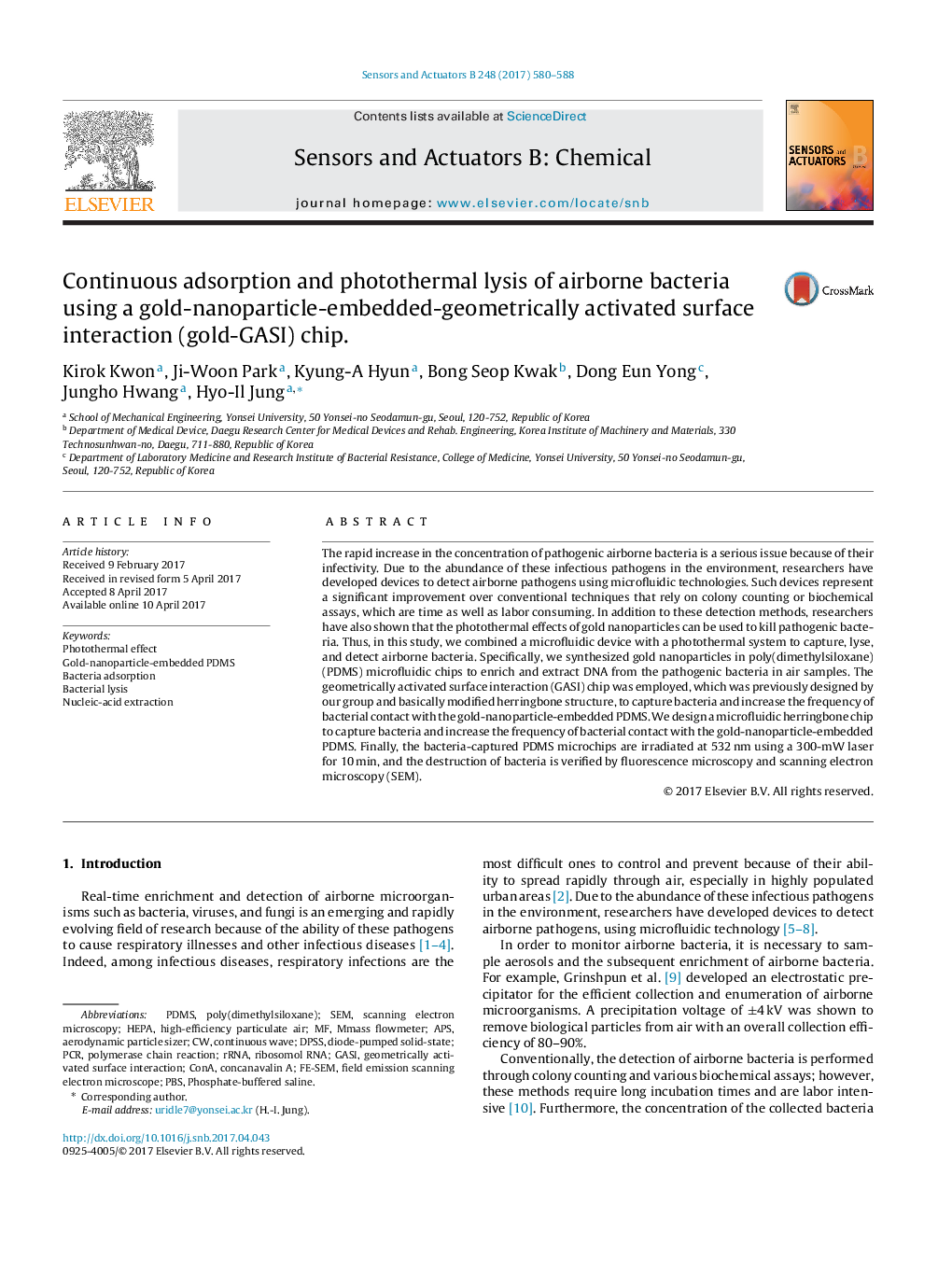| Article ID | Journal | Published Year | Pages | File Type |
|---|---|---|---|---|
| 5009216 | Sensors and Actuators B: Chemical | 2017 | 9 Pages |
Abstract
The rapid increase in the concentration of pathogenic airborne bacteria is a serious issue because of their infectivity. Due to the abundance of these infectious pathogens in the environment, researchers have developed devices to detect airborne pathogens using microfluidic technologies. Such devices represent a significant improvement over conventional techniques that rely on colony counting or biochemical assays, which are time as well as labor consuming. In addition to these detection methods, researchers have also shown that the photothermal effects of gold nanoparticles can be used to kill pathogenic bacteria. Thus, in this study, we combined a microfluidic device with a photothermal system to capture, lyse, and detect airborne bacteria. Specifically, we synthesized gold nanoparticles in poly(dimethylsiloxane) (PDMS) microfluidic chips to enrich and extract DNA from the pathogenic bacteria in air samples. The geometrically activated surface interaction (GASI) chip was employed, which was previously designed by our group and basically modified herringbone structure, to capture bacteria and increase the frequency of bacterial contact with the gold-nanoparticle-embedded PDMS. We design a microfluidic herringbone chip to capture bacteria and increase the frequency of bacterial contact with the gold-nanoparticle-embedded PDMS. Finally, the bacteria-captured PDMS microchips are irradiated at 532Â nm using a 300-mW laser for 10Â min, and the destruction of bacteria is verified by fluorescence microscopy and scanning electron microscopy (SEM).
Keywords
PBSBacterial lysisDPSSrRNAConAConcanavalin AHEPAPDMSFE-SEMAPsPhotothermal effectAerodynamic particle sizerPhosphate-buffered salineSEMcontinuous waveField Emission Scanning Electron MicroscopeScanning electron microscopyhigh-efficiency particulate airpolymerase chain reactionPCRpoly(dimethylsiloxane)
Related Topics
Physical Sciences and Engineering
Chemistry
Analytical Chemistry
Authors
Kirok Kwon, Ji-Woon Park, Kyung-A Hyun, Bong Seop Kwak, Dong Eun Yong, Jungho Hwang, Hyo-Il Jung,
